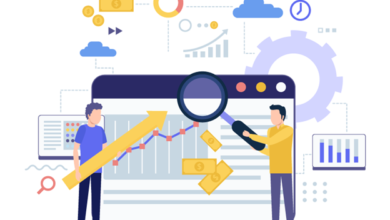Prioritizing Data Privacy: Best Practices for Modern Organizations

Strengthening data protection is a must for organizations that share or transmit data online. This article covers some of the best data privacy practices for businesses.
Data privacy is becoming more important than ever for modern organizations due to ever-expanding cyber-attack surfaces. The average cost of a data breach is USD 9.48 million in 2023; organizations are currently planning on increasing their investments in incident response planning, testing, and data privacy security. Good data privacy safeguards a company’s sensitive assets, boosts customer trust and loyalty, and greatly enhances an organization’s reputation. Let’s unlock the benefits of maintaining confidentiality and explore more below.
The Elephant in the Room: Data Privacy
It isn’t surprising to learn that there were over 867,072,315 breached and 114 publicly disclosed incidents as of November 2023. A third of security data breaches are induced by password malware; workers tend to reuse compromised passwords across personal and work-related accounts, thus escalating threats. Many organizations do not implement two-factor authentication and keep outdated technologies in their infrastructure.
Organizations should focus on:
- Ensuring transparency in how sensitive data is collected and used
- Maintaining compliance with data privacy laws
- Addressing data protection, data storage, and data confidentiality limitations
Not all data is created equal and users who access it must be authorized to use or distribute it. Data which is kept confidential can be of various types, which are – personally identifiable information (PII), healthcare information (PHI), corporate data (Private/restricted), trade union memberships, religious beliefs, political opinions, etc.
The following are the top data privacy best practices for organizations:
Data Collection and Storage
Understand the data you collect and determine what is being captured by your company. The first step to data privacy is data classification. You need to take a step back and ask essential questions such as:
- What is the data being used for?
- How is the data collected?
- What vulnerabilities are present in the data?
Legal and Compliance Requirements
There are numerous legal and compliance regulatory frameworks out there. Your job is to adhere to data privacy regulations that align with your business and make sure your company doesn’t violate them. You can hire a dedicated outsourced vendor to review your current compliance policies and revise data protection expectations.
A major data privacy compliance requirement is creating dedicated communication channels for your clients who may request access to, amend, or delete their data. Be foresighted in responding to their queries and emails, if any arise. Data privacy compliance is very essential and can help one avoid hefty fines. Hiring a dedicated in-house legal counsel or leveraging customized data privacy compliance management solutions for this is one way to go about it.
Data Access and Controls
Only authorized users in your organizations should have access to sensitive data. It is important to implement the principle of least privilege access across all cloud and on-prem environments. Isolate data leaks and establish data approval layers to restrict access and pinpoint vulnerabilities. Only approve access after you get a sign-off from senior decision makers in the organization. Be sure you know how third-party partners are accessing or interacting with your data. You are liable for data breaches caused through their access which is why it’s recommended to use strong access control tools and policies.
WiFi Networks and Cookies
Public and free WiFi networks are information goldmines for hackers and lucrative targets. Remind employees to use VPN services if they’re on unvetted public networks and use only secure networks when accessing company data. Review your data usage, sharing, and cookie policies to stay compliant with privacy regulators. Most regulators such as the likes of the European Union usually issue an advance notice right before you try to use cookies for anything outside the scope of your business activities. When it comes to data sharing, avoid risks by shifting to secure file sharing systems. Do not use emails or USB devices for sharing your files.
Data Minimization Rules
Track and restrict data hoarding activities by employees and delete junk data that has no business value. Conduct regular data audits and archive any past data that has outlived its usefulness. Data minimization should include data collection restrictions and be limited by consumer consent. The EU GDPR mandates data minimization to protect customer privacy rights under the GDPR Article 5. Data minimization rules can vary by nation and two of the most popular ones adhered by global organizations are – the UK Data Protection Act (2018) and the California Consumer Privacy Act.
Data Masking, Encryption, and Auditing
Common data masking techniques employed by organizations are – randomization, substitution, shuffling, hashing, tokenization, and encryption. There are also different types of data masking such as – static data masking, dynamic data masking, deterministic data masking, statistical obfuscation, and on-the-fly data masking. Data encryption includes encrypting sensitive data in transit and at rest. Organizations should conduct periodic audits and maintain clear data audit trails as well for future reference.
Data Incident Response and Breach Management
Use incident response and breach management solutions to improve data privacy. There are many open-source and paid tools you can use for this. AI-driven cyber security platforms like SentinelOne can help you automate incident response and breach management. A well-designed incident response plan can thwart threats, reduce business downtimes, and keep your organization protected.
Data privacy Employee Training
This training is a high priority for organizations. As technology advances, cyber threats will continue to evolve. Employees need to be educated on the best practices related to cyber hygiene and know how to protect themselves. Data privacy training for employees must include compliance training, security awareness training, and other topics such as how to deal with policy violations, mitigate risks, handle data securely, and more.
Conclusion
Organizations tend to have very few safeguards in place for treating customer data privately and reviewing how individuals use their own data. Data privacy protection measures can ensure the confidentiality, integrity, and secure availability of sensitive information. A lot of users fall victim to social engineering tactics, scams, and other malicious tactics employed by adversaries; it is very important to keep your eyes focused and be ready in this competitive landscape.
Disclaimer: The opinions expressed here are my own and do not reflect those of my current or former employers.
Note: This article was written by Gagan Koneru, Cybersecurity and GRC Specialist
Bio: Gagan is an experienced cybersecurity professional and is specialized in Governance, Risk and Compliance (GRC). His expertise lies in implementing robust security frameworks, leading security assessments, and proactive risk management. Gagan advocates for organizations to embrace data security and privacy as a continuously evolving process, integrating it into their organizational lifestyle.
Headshot: https://www.linkedin.com/in/gagankoneru/





